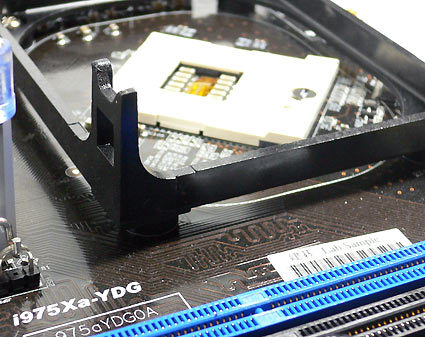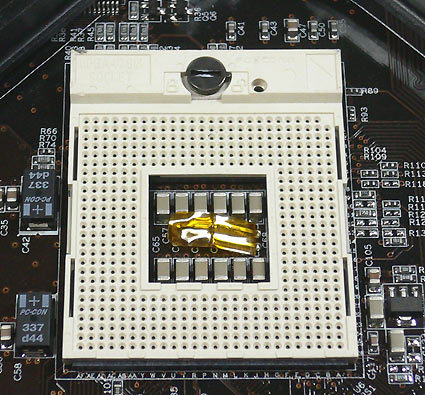AOpen Releases Core Duo To The Desktop
Core Duo On A Desktop Motherboard
This is real news: a 975X dual graphics motherboard with a Socket 479 for Intel's Core Duo or Core Solo.
Our Napa platform launch article left some room for skepticism, because the battery life of the Centrino Duo platform - Core Duo Processor, Intel chipset and Intel WLAN - initially did not live up to expectations. However, there is no problem with the hardware: It turns out that it is a shortcoming in Microsoft's ACPI driver implementation that causes certain USB devices to draw more energy than needed. In fact, the new Core Duo mobile processor is definitely one of the finest products that has ever left Intel's manufacturing facilities - it almost doubles performance when using thread-optimized applications, increases system responsiveness, and only requires more power than a Pentium M under maximum load. When idle, the chip actually manages to be very energy efficient.
It is exactly this high energy efficiency that makes Core Duo so attractive for more areas than just the mobile space. Half a year ago, we put together a Pentium M based desktop system that required as little as 37 W when running under low load. This is still a record for fully featured desktop systems running with low-power components (no powerful 3D graphics card here). Fully featured means that we used standard components for the power supply and memory, and even a regular 3.5" desktop hard drive (instead of a more efficient, but slower 2.5" mobile model.)
So what we can observe here is a clear split between high performance, high power systems, and low power systems that do not put emphasis on performance. If you need to encode or edit audio, video or images, play sophisticated games or run other demanding applications, a quick dual core computer based on the Athlon 64 X2 or Pentium D will be your ideal choice today. However, if you want the system to be living room and family compatible - which means that it must be quiet and ideally not emit any noticeable heat - you don't have much of a choice. It needs to be a low power system, either using an AMD Turion 64 or an Intel Pentium M processor. These do not draw a lot of power and don't get very hot, so they don't heat up motherboard components or cause the power supply to get hot either. As a result, the whole system does not require a lot of cooling.
Low power dual cores offer both neat thermal levels and platform requirements, as well as sufficient performance for demanding applications. It is pretty obvious that any computer system that is to be fast enough and "den compatible" must be based on a low power dual core. This will open up some real chances for computers and consumer electronics to grow together.
For this simple reason, Intel targets a mainstream thermal envelope of 65 W for processors, starting in Q3/2006. AMD, by the way, is doing the same, as there will be lower power Athlon 64 processors (65 W) available at around the time of Computex. Amazingly, these will be based on a larger 90 nm SOI process, while Intel needed its 65 nm process refinement to reach that target. And then there is AMD's Turion 64 X2, which is due soon...
Core Duo's 479 pin socket does not have a lever, but rather a locking screw for securing the processor.
Get Tom's Hardware's best news and in-depth reviews, straight to your inbox.
Current page: Core Duo On A Desktop Motherboard
Prev Page AOpen's Mobile On Desktop (MoDT) Launches Next Page Lower Power Requirements
Patrick Schmid was the editor-in-chief for Tom's Hardware from 2005 to 2006. He wrote numerous articles on a wide range of hardware topics, including storage, CPUs, and system builds.


